This guide details server rack trays (aka server rack shelves)–their classifications, materials, key parameters, and purchasing tips. It also explains critical considerations and solutions when selecting a Chinese OEM partner for high-quality manufacturin

Expert advice on selecting a reliable Chinese OEM for quality server rack tray manufacturing.
The Ultimate Guide to Server Rack Trays and Choosing a Chinese OEM Factory
Choose a Chinese OEM for Server Rack Trays
Server Rack Trays(Server Rack Shelves)
Modern data centers power today's digital economy by hosting servers, switches, and a variety of critical IT equipment. The efficiency, organization, and safety of these centers depend not only on the hardware itself but also on the accessories that support it. Among these, server rack trays—also known as server rack shelves—play a pivotal role in ensuring that your equipment is securely housed, well-organized, and properly ventilated.
While these trays may seem like simple components, they are essential for maintaining proper airflow, reducing cable clutter, and providing stable support for peripheral devices. Furthermore, with the rise of advanced manufacturing in China, choosing the right OEM (Original Equipment Manufacturer) factory for your server rack trays has become a strategic decision. A reliable Chinese OEM partner can offer advanced production capabilities, rigorous quality control, competitive pricing, and robust after-sales support (especially for quality issues or shipment shortages).
This comprehensive guide will explore everything you need to know about server rack trays—from their definition and classification to detailed discussions on materials, key technical parameters, and applications. We'll also provide expert insights into selecting a Chinese OEM factory, outlining the challenges you might face and effective solutions to ensure a seamless production process.
1. Understanding Server Rack Trays
1.1 What Are Server Rack Trays?
Server rack trays (or server rack shelves) are flat, supportive platforms designed to be mounted within server racks. Their primary function is to provide a stable surface for placing servers, switches, keyboards, and other IT equipment. In addition, they help organize cables, enhance airflow, and improve the overall aesthetics of a data center.
While the term "server rack tray" is most common, you might also hear them referred to as "server rack shelves" or simply "rack trays." Regardless of the terminology, these components are critical for maintaining an efficient, organized, and professional data center environment.
1.2 The Importance of Server Rack Trays
Server rack trays are not just passive components—they contribute significantly to the functionality and efficiency of your data center by:
- Optimizing Space:
By providing additional mounting surfaces, trays maximize the use of available rack space.
- Enhancing Airflow:
Properly designed trays allow for unobstructed airflow, which is crucial for cooling high-density equipment.
- Improving Organization:
Integrated cable management features help prevent cable clutter, reducing maintenance time and the risk of overheating.
- Facilitating Access:
Whether fixed or sliding, trays are designed to make it easier to access components for maintenance or upgrades.
In essence, server rack trays help ensure that your data center is both efficient and scalable, supporting the seamless operation of your IT infrastructure.
2. Classification of Server Rack Trays
Server rack trays can be classified in several ways. Understanding these classifications helps in choosing the right product for your specific needs. Below, we outline the primary classification methods:
2.1 Classification by Rack Type
2.1.1 2-Post Trays
2-post trays are designed for racks that use two mounting posts. They are typically lighter in construction and are used in less demanding applications.
Materials & Dimensions:
- Materials: Commonly made from lightweight aluminum or high-grade plastics.
- Dimensions: Often designed to match the spacing of 2-post racks (standard widths around 600–800 mm) with a typical thickness of 1.5–2.0 mm.
Applications:
- Ideal for small to medium-sized installations.
- Suitable for mounting lighter equipment or peripheral devices.
2.1.2 4-Post Trays
4-post trays are used in racks that have four mounting posts, providing a more robust and secure mounting surface.
Materials & Dimensions:
- Materials: Typically constructed from steel or aluminum for enhanced strength.
- Dimensions: Designed for standard 4-post racks, with dimensions similar to server rack widths (600–800 mm) and depths (800–1200 mm). Thickness generally ranges from 1.5 mm to 2.5 mm.
Applications:
- Commonly used in enterprise data centers for mounting heavy-duty servers.
- Provide enhanced stability and support for high-performance equipment.
2.2 Classification by Structural Design
2.2.1 Fixed Trays
Fixed trays are permanently installed within a rack. They offer a sturdy and reliable solution without the need for movement.
Materials & Dimensions:
- Materials: Typically made from heavy-duty steel or aluminum.
- Dimensions: Custom-fitted to the rack's internal dimensions with high precision (tolerances as tight as ±0.2 mm), usually with a thickness between 2.0–2.5 mm.
Applications:
- Best suited for data centers with static configurations.
- Ideal for installations where stability and low maintenance are priorities.
2.2.2 Sliding Trays
Sliding trays are designed for ease of access. They can be pulled out for maintenance or reconfiguration and then pushed back into place.
Materials & Dimensions:
- Materials: Often manufactured from lightweight aluminum or reinforced plastics.
- Dimensions: Typically slightly thinner (1.5–2.0 mm) for ease of movement; include integrated sliding mechanisms and locking systems (often tool-less).
Applications:
- Ideal for dynamic data centers where frequent access is required.
- Useful in environments where equipment upgrades or rearrangements are common.
2.3 Classification by Function
2.3.1 Mounting Trays
Mounting trays provide a stable platform for installing servers and networking equipment. They are designed to support heavy loads and are often integrated with cable management features.
Materials & Dimensions:
- Materials: Commonly produced from steel or aluminum.
- Dimensions: Must adhere to the dimensions of the rack; typically produced in 1U, 2U, or multi-U sizes with thicknesses ranging from 1.5 mm to 2.5 mm.
Applications:
- Essential for standard and high-density server installations.
- Provide a reliable base for critical IT equipment.
2.3.2 Keyboard Trays
Keyboard trays are specialized sliding trays designed to hold keyboards and other input devices. They are ergonomically designed for ease of use.
Materials & Dimensions:
- Materials: Often constructed from lightweight aluminum or durable high-grade plastics.
- Dimensions: Engineered for ergonomic accessibility, typically with a thickness of 1.5–2.0 mm and adjustable sliding mechanisms.
Applications:
- Used in control rooms or server management workstations.
- Provide comfort and accessibility for IT personnel interacting with equipment.
2.3.3 Other Functional Trays
Other functional trays may include specialized designs such as cable trays, monitor shelves, or accessory holders.
Materials & Dimensions:
- Materials: Varies based on function; may use a combination of metals and plastics.
- Dimensions: Custom-designed to meet specific needs; integrated features such as cable channels or mounting points are common.
Applications:
- Enhance the overall organization of the rack.
- Facilitate specific operational requirements like accessory management or improved user access.
2.4 Alternative Names and Terminology
Server rack trays are also commonly known as:
- Server Rack Shelves
- Rack Trays
- Equipment Shelves
These terms are often used interchangeably in the industry, but all refer to the same fundamental component that provides a supportive platform within a server rack.
3. Materials, Key Parameters, and Purchasing Considerations
In this section, we provide a detailed overview of the materials used in manufacturing server rack trays, the key technical parameters to be aware of, and important considerations when purchasing these components.
3.1 Materials Used in Server Rack Trays
The selection of material is one of the most important factors affecting the performance, durability, and cost of server rack trays.
3.1.1 Steel
Properties and Advantages:
- Strength and Durability:
Steel is renowned for its high tensile strength and durability, making it ideal for supporting heavy equipment.
- Cost-Effectiveness:
Generally, steel is widely available and cost-effective, especially for high-volume production.
- Finish Options:
Steel can be easily finished with powder coatings or other treatments to enhance its appearance and corrosion resistance.
Common Specifications:
- Thickness:
Typically ranges from 1.5 mm to 2.5 mm.
- Dimensions:
Standard widths and depths are tailored to match typical rack sizes, with tight tolerances (±0.2 mm).
Disadvantages:
- Weight:
Steel is heavy, which may necessitate additional structural support.
- Corrosion:
Without proper treatment, steel is susceptible to rust, particularly in humid environments.
Applications:
- Best used in environments where maximum durability and load-bearing capacity are required, such as enterprise data centers.
3.1.2 Aluminum
Properties and Advantages:
- Lightweight:
Aluminum's low density makes it easier to handle and reduces the overall weight of the rack.
- Corrosion Resistance:
Naturally resistant to corrosion, making it ideal for modern data centers.
- Aesthetic Appeal:
Offers a sleek, modern look that is often preferred in contemporary installations.
Common Specifications:
- Thickness:
Commonly ranges from 1.5 mm to 2.5 mm.
- Dimensions:
Customizable to match rack dimensions with high precision.
Disadvantages:
- Strength:
While strong, aluminum typically does not match the load-bearing capacity of steel.
- Cost:
In some cases, aluminum may be more expensive than steel.
Applications:
- Preferred for installations where weight savings and a modern aesthetic are priorities, such as smaller data centers or high-tech environments.
3.1.3 High-Grade Plastics and Composites
Properties and Advantages:
- Cost-Effective:
Generally less expensive than metals, offering a budget-friendly alternative.
- Lightweight:
Their low weight makes them easy to install and handle.
- Design Flexibility:
Can be molded into complex shapes, enabling integrated features such as cable management channels.
- Chemical and Corrosion Resistance:
Many high-grade plastics are resistant to chemicals and corrosion.
Common Specifications:
- Material Types:
Common options include PVC and polycarbonate.
- Thickness:
Varies widely depending on the application, generally around 1.5 mm to 2.0 mm for non-structural components.
Disadvantages:
- Strength:
Plastics typically offer lower structural strength compared to metals.
- Thermal Stability:
May not perform well in high-temperature environments.
- Aging:
Over time, some plastics can degrade or discolor, particularly under prolonged UV exposure.
Applications:
- Ideal for lightweight or non-critical components, such as cable management accessories or decorative elements.
3.1.4 Hybrid Materials
Properties and Advantages:
- Balanced Performance:
Combines the strengths of different materials, such as the strength of metals with the lightness of plastics.
- Customization:
Allows manufacturers to tailor properties to specific requirements.
- Enhanced Durability:
Can offer improved performance in terms of resistance to corrosion, thermal stability, and overall longevity.
Common Specifications:
- Material Combinations:
Often involves using a metal frame with plastic or composite panels.
- Thickness and Dimensions:
Customized to achieve the desired balance of strength and weight, with precise engineering to maintain tight tolerances.
Disadvantages:
- Complex Manufacturing:
More challenging production processes may increase costs.
- Repair Complexity:
Hybrid components may be more difficult to repair if damaged.
Applications:
- Suitable for specialized data centers requiring a custom blend of durability, weight reduction, and aesthetic appeal.
3.2 Key Technical Parameters
When evaluating server rack trays, several technical parameters are crucial:
- Dimensions:
Accurate dimensions are critical to ensure compatibility with standard rack sizes. This includes the height (measured in rack units), width, and depth of the trays. Tolerances should be maintained within ±0.2 mm.
- Material Thickness:
The thickness of the metal or other materials directly impacts the strength and rigidity of the tray. Typical values range from 1.5 mm to 2.5 mm.
- Load-Bearing Capacity:
Especially important for trays that support heavy equipment. Some trays are engineered to support loads of 50 kg or more per unit area.
- Ventilation and Airflow:
For trays integrated with ventilation features, the size and spacing of perforations (typically 5 mm to 10 mm in diameter) must be optimized to maintain airflow without compromising structural integrity.
- Surface Finishing:
Coatings such as powder coating or anodizing not only enhance the visual appeal but also improve corrosion resistance and durability.
- Installation Mechanisms:
Features such as tool-less locking systems, pre-drilled holes (commonly 5 mm in diameter), and sliding or fixed mounting options can greatly affect ease of use and maintenance.
3.3 Purchasing Considerations
When purchasing server rack trays, keep these factors in mind:
- Compatibility:
Ensure the trays are designed to fit the specific dimensions and load requirements of your server racks.
- Quality:
High-quality materials and tight manufacturing tolerances are crucial for long-term reliability.
- Functionality:
Evaluate whether the tray's design meets your operational needs, including ventilation, cable management, and accessibility.
- Cost:
Consider both the upfront price and the total cost of ownership, factoring in maintenance, potential downtime, and lifespan.
- Supplier Reputation:
Verify the supplier's track record and quality control processes. Check for certifications and references where possible.
By thoroughly assessing these technical parameters and purchasing considerations, you can select server rack trays that not only meet but exceed your data center's requirements.
4. Key Considerations When Choosing a Chinese OEM Factory for Server Rack Trays
Selecting the right Chinese OEM factory to manufacture your server rack trays is critical to ensuring the quality, consistency, and cost-effectiveness of your data center components. In this section, we detail the factors you should consider when evaluating potential OEM partners and provide solutions for common challenges.
4.1 Experience and Technical Expertise
Why It Matters:
An OEM factory with extensive experience in sheet metal fabrication and metal processing has the technical know-how required to produce high-quality server rack trays. Their expertise ensures that even complex designs are executed flawlessly.
Key Considerations:
- Industry Background:
Look for an OEM with a proven track record in producing server rack trays, blank panels, and other data center accessories.
- Specialization:
Verify that the factory specializes in the types of trays you need, whether standard, high-density, modular, fixed, or sliding.
- Engineering Support:
A strong in-house engineering team is vital. They should be capable of refining designs, troubleshooting production challenges, and ensuring that every component meets precise specifications.
Solution:
Select an OEM partner who can demonstrate a history of successful projects and provide references or certifications that attest to their technical competence.
4.2 Advanced Production Capabilities
Why It Matters:
High-quality production is crucial for achieving the precision and durability required in server rack trays. Modern manufacturing equipment ensures tight tolerances and consistency across large production runs.
Key Considerations:
- Precision Equipment:
The factory should use advanced machinery such as laser cutting, CNC bending, and automated stamping systems. These tools are essential for maintaining tolerances as tight as ±0.2 mm.
- Material Processing:
Ensure the OEM is proficient in working with various materials, including steel, aluminum, high-grade plastics, and composites. Their ability to handle different thicknesses (typically 1.5 mm to 2.5 mm) is key.
- Scalability:
The OEM should be capable of ramping up production from small prototypes to large-scale orders without sacrificing quality.
- Customization:
Look for flexibility in production to accommodate custom designs, integrated features (like cable management or sliding mechanisms), and specialized finishes.
Solution:
Evaluate the factory's production line and request detailed information on their machinery, throughput, and quality assurance systems. A tour of the facility (if possible) can offer insights into their operational efficiency and capacity for customization.
4.3 Rigorous Quality Control
Why It Matters:
Consistent quality is essential in data center components where even minor defects can lead to significant operational issues. A rigorous quality control system minimizes risks and ensures long-term reliability.
Key Considerations:
- In-Process Inspections:
The OEM should have robust quality checks at every stage—from raw material handling to final assembly.
- Final Testing:
Comprehensive final product testing, including dimensional accuracy, load-bearing capacity, and thermal performance, is a must.
- Certifications:
International quality certifications (e.g., ISO 9001) provide confidence in the manufacturer's processes.
- Traceability:
A system for tracing components from raw material to finished product helps quickly identify and resolve any quality issues.
Solution:
Request detailed documentation on the OEM's quality control protocols and certifications. Regular audits and the availability of traceability records are strong indicators of a commitment to quality.
4.4 Supply Chain Integration and Logistics
Why It Matters:
A seamless supply chain ensures that production runs smoothly from start to finish. It reduces the risk of delays and helps maintain consistent quality across all production stages.
Key Considerations:
- End-to-End Management:
The OEM should handle every step, including raw material sourcing, production, quality control, packaging, and shipping.
- Inventory Systems:
Efficient inventory management is critical, especially for large orders.
- Logistics:
Reliable and timely logistics ensure that your order is delivered on schedule.
- Cost Efficiency:
A well-integrated supply chain can reduce costs by minimizing waste and improving production efficiency.
Solution:
Assess the OEM's supply chain integration by reviewing their production timeline, inventory management systems, and logistics partnerships. Look for evidence of a streamlined process that supports on-time delivery.
4.5 Transparent Pricing and Cost Considerations
Why It Matters:
Understanding the full cost structure is essential to making an informed decision. Transparent pricing helps you assess the value of your investment and avoid unexpected expenses.
Key Considerations:
- Itemized Quotations:
The OEM should provide detailed cost breakdowns, including raw material, labor, finishing, and shipping.
- Competitive Rates:
Compare proposals from several OEM partners, focusing on overall value rather than simply the lowest cost.
- Total Cost of Ownership:
Consider long-term costs such as maintenance, potential downtimes, and product lifespan.
Solution:
Request detailed quotations from multiple OEMs and perform a comparative analysis. Transparency in pricing and a clear explanation of any additional costs will help ensure you select the most cost-effective partner without sacrificing quality.
4.6 Communication and After-Sales Support
Why It Matters:
Effective communication throughout the production process is vital. Moreover, robust after-sales support ensures that any issues—such as quality defects or shipment shortages—are promptly resolved.
Key Considerations:
- Dedicated Account Manager:
A single point of contact who can manage your project and coordinate production is essential.
- Proactive Updates:
Regular communication on production progress, potential delays, and design modifications is crucial.
- After-Sales Policies:
Clear, transparent policies for returns, exchanges, and replenishments in case of quality issues are a must. (For instance, HULK Metal offers after-sales support for quality issues and short shipments.)
- Responsive Service:
The ability to quickly address and resolve any concerns or issues that arise during or after production.
Solution:
Prioritize OEM partners with a strong reputation for communication and customer support. Look for reviews, testimonials, or direct references that confirm their responsiveness and after-sales reliability.
4.7 Customization and Flexibility
Why It Matters:
Data centers have unique requirements, and the ability to customize server rack trays is crucial. An OEM that offers flexibility in design and production can deliver products that meet your exact specifications.
Key Considerations:
- Tailored Production:
The OEM should be capable of manufacturing trays with custom dimensions, finishes, and integrated features.
- Collaborative Approach:
Look for a partner that works closely with your design team to refine and optimize product specifications.
- Rapid Prototyping:
The ability to produce and test prototypes quickly is essential to ensure that design modifications are implemented effectively.
Solution:
Evaluate the OEM's customization capabilities by reviewing their previous work and discussing your specific needs. A collaborative, flexible partner will ensure that your custom requirements are met without delays.
4.8 Summary of OEM Selection Considerations
When choosing a Chinese OEM factory for your server rack trays, it is essential to assess the following:
- Experience and Expertise:
A proven track record, industry specialization, and strong engineering support.
- Advanced Production Capabilities:
Modern machinery, material versatility, scalability, and customization flexibility.
- Rigorous Quality Control:
Continuous inspection, final testing, certifications, and traceability systems.
- Supply Chain Integration:
End-to-end management, efficient inventory systems, and reliable logistics.
- Transparent Pricing:
Detailed, competitive cost structures and clear total cost of ownership.
- Effective Communication and After-Sales Support:
A dedicated account manager, regular updates, and robust policies for handling quality issues.
- Customization and Flexibility:
The ability to tailor products to your specific requirements through collaborative design and rapid prototyping.
By thoroughly evaluating these factors, you can select an OEM partner that not only meets your technical and operational requirements but also supports your long-term business objectives and data center growth.
Final Thoughts
Server rack trays (or server rack shelves) are essential components that contribute to the efficiency, organization, and aesthetic appeal of data centers. Their proper design, material quality, and precise manufacturing are critical to ensuring that your IT infrastructure performs reliably. Whether you are installing standard, high-density, modular, fixed, sliding, or custom trays, every detail—from material selection to technical specifications—must be carefully considered.
Choosing a Chinese OEM factory for the production of server rack trays is a strategic decision that can significantly impact your data center's performance. By focusing on factors such as experience, advanced production capabilities, rigorous quality control, integrated supply chain management, transparent pricing, and effective communication with robust after-sales support, you can ensure that every component is manufactured to the highest standards.
HULK Metal exemplifies these qualities with its broad range of OEM manufacturing capabilities for network server accessories, including various models of server rack trays. Their commitment to quality and dependable after-sales support for any quality issues or shipment shortages positions them as a trusted partner for companies seeking reliable, high-quality products.
Investing in the right OEM partner is not just about minimizing costs—it is about building a solid foundation for a robust, scalable, and future-proof data center. Every well-engineered component, including your server rack trays, contributes to reduced downtime, enhanced efficiency, and long-term operational success.
Thank you for reading this comprehensive guide on common network server accessories and the key considerations for choosing a suitable Chinese OEM factory to produce your server rack trays. We hope the insights provided empower you to make an informed, strategic decision that enhances the performance and reliability of your data center infrastructure.
Contact us today to discuss your production requirements and receive a competitive, custom-tailored quote from a partner dedicated to excellence in server rack tray manufacturing.
Article Navigation
Article Navigation
Industries
Forging Factory
-
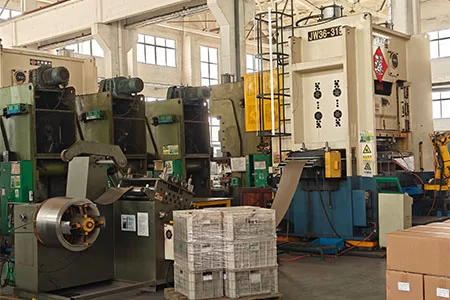 252025.03Metal Stamping OEM Factory in China
252025.03Metal Stamping OEM Factory in China -
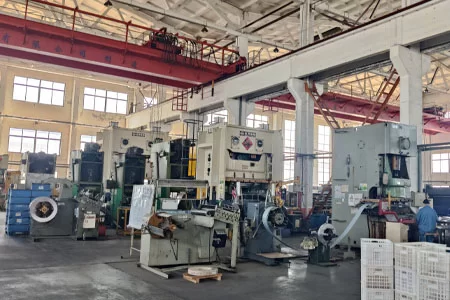 212024.11HULK Metal Stamping Factory Show
212024.11HULK Metal Stamping Factory Show -
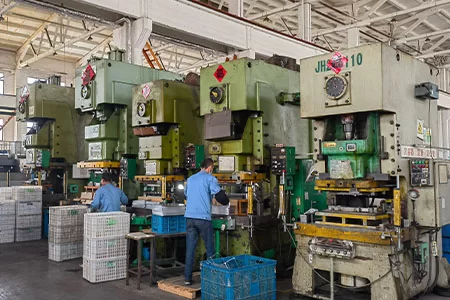 182024.10HULK Metal Fabrication
182024.10HULK Metal Fabrication -
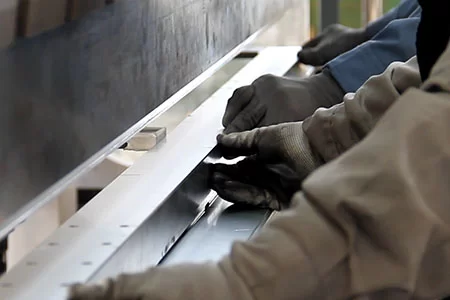 212025.03Comprehensive Guide to Sheet Metal Bending
212025.03Comprehensive Guide to Sheet Metal Bending -
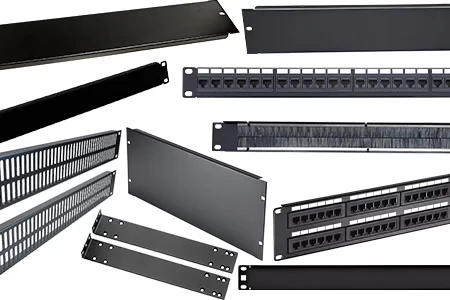 282025.02A Suitable OEM Factory for Your Network Server Blank Panels
282025.02A Suitable OEM Factory for Your Network Server Blank Panels -
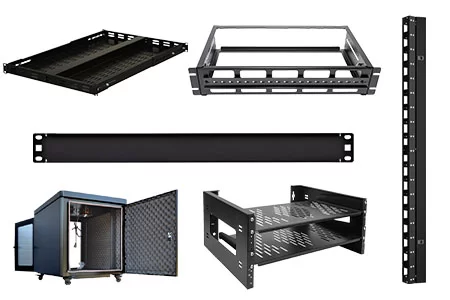 282025.02Common Network Server Accessories: A Complete Guide
282025.02Common Network Server Accessories: A Complete Guide -
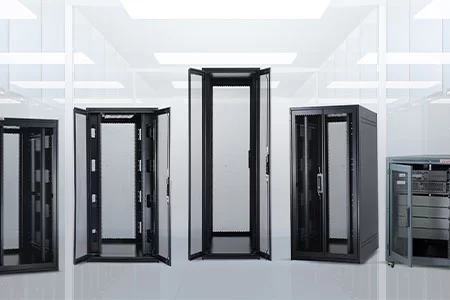 262025.02A Comprehensive Guide to Network Server Racks
262025.02A Comprehensive Guide to Network Server Racks -
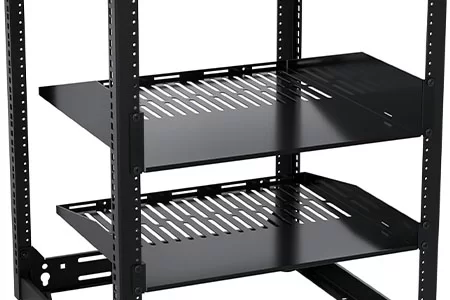 242025.02Optimized Network Server Tray Solutions for Enhanced Data Center Efficiency
242025.02Optimized Network Server Tray Solutions for Enhanced Data Center Efficiency


